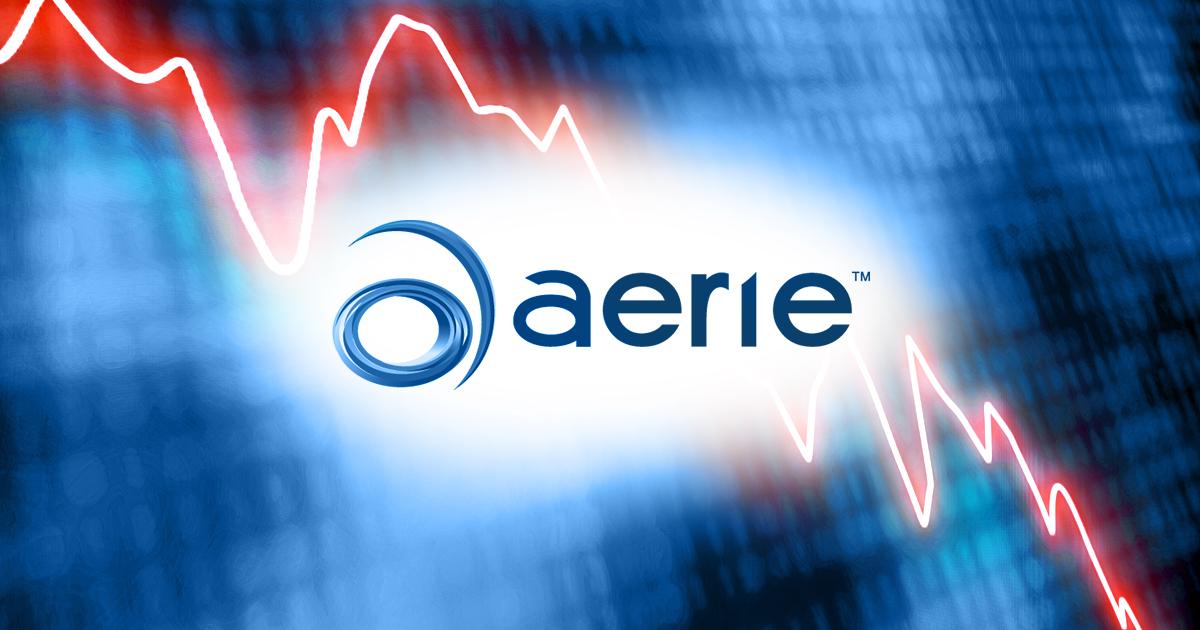Ain’t Misbehaving

What a difference a day (or so) makes.
On Oct. 10, the day of the Ophthalmic Innovation Summit, Aerie Pharmaceuticals’ stock closed at $17.72. The next day, it closed at $20.15. On Oct. 21, the day’s high was $20.70; it closed at $19.59.
Is this any way for Aerie’s stock to behave?
The company launched two remarkable, once-daily glaucoma medications in the last 18 months. Rhopressa, released to the market in April of last year, treats open-angle glaucoma by increasing the outflow of aqueous humor through the trabecular meshwork – where most fluid will drain from a non-diseased eye. In May came what the company considers its moneymaker: Rocklatan, a combination of Rhopressa and a glaucoma specialist’s go-to medication, latanoprost. It too increases outflow, both through the Rhopressa mechanism of action and also through the uveoscleral pathway.
In an interview prior to the summit, CEO and Chairman Vicente Anido Jr., PhD, acknowledged the decline, adding the way to reverse that trend is to keep performing.
He said the stock value drop – 60% over the last year – was not a surprise.
Aerie’s type of investor has changed, he explained. Since its first drug approval Aerie has gone from having the type of investor who gambles on whether a drug will get approved, to the type that worries about profit. “The big thing everyone is focused on right now is our weekly prescription numbers,” Dr. Anido said. “But as we post more and more successes on the revenue side, I think you’ll start seeing an uptick eventually and within maybe six months to a year we’ll start getting credit for our pipeline again, and the stock goes back up.”
He no doubt was speaking of the prescription data included in the investors presentation that Aerie executives had recently given, which showed IQVIA weekly data spiraling up at 45-degree angles. That prescription growth could account for some of that 21% stock hike on Oct. 11. Also, some Medicare Part D patients didn’t have access to Rhopressa until May: it is now available to 75% of enrollees. With recently approved Rocklatan, that figure is about half.
A check on a few formularies, which went into effect Oct. 1, showed all included Rhopressa.
Dr. Anido chatted about the coverage these therapies provide. Rhopressa is seen more as a concomitant therapy; Rocklatan is seen as a treatment for patients who have not responded well to other treatments.
Although Rocklatan provides more effective treatment overall, Dr. Anido said Aerie doesn’t see Rhopressa ever going away.
With both Rhopressa and Rocklatan in the marketplace, doctors are beginning to decide when to use one versus the other, Dr. Anido noted. Rocklatan is pricier, so doctors are figuring out how to get the best results, at an affordable price.
He explained that when doctors see the Rocklatan data they want to try the medication in patients whose illness has been unresponsive to other treatments. But if the physicians encounter reimbursement issues, they consider Rhopressa in combination with Lumigan or another agent with an easier path to reimbursement. Or for patients who don’t respond to a prostaglandin, they consider a similar alternative approach.
Global Growth
Dr. Anido discussed global progress. The European Medicines Agency has given Rhokiinsa (netarsudil’s name in the EU) a positive vote; a final decision should come within the next few months.
The firm is making headway into establishing its manufacturing facility in Ireland. Once completed and inspected, Aerie will make US-bound Rocklatan there. Dr. Anido hopes production starts within a few months.
That investor presentation mentioned previously? It went on for 20 slides, with details about Aerie’s interest in retina disease therapies. Two studies of note involve a steroid, the other, the Rho-kinase inhibitor.
Dr. Anido said, “A lot of what we’re trying to do is make sure that not only do the inserts deliver the drug for the roughly six-month period of time we’re looking for, but that everything all the way to the applicator is easy for doctors to use.”
— with additional reporting from Christine Bahls
